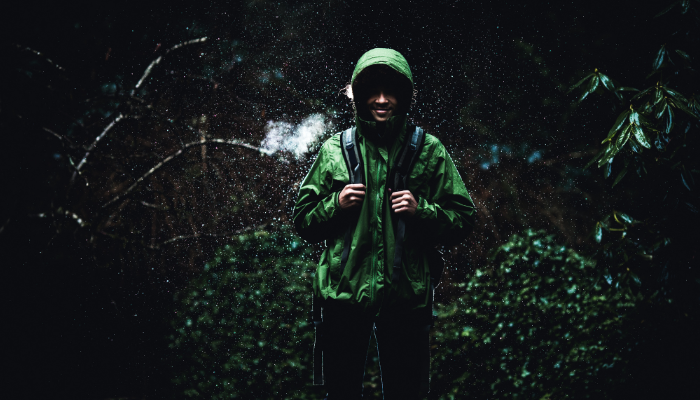
Why Backpack Size Matters for Hikers
Choosing the right size backpack is not just about space—it’s about comfort, balance, and safety. An incorrectly sized pack can lead to sore shoulders, an aching back, or even injury. When you’re navigating rocky paths, steep inclines, or long distances, the last thing you want is a backpack that throws off your posture or digs into your spine.
A hiking backpack is more than a storage solution—it’s a part of your gear that needs to complement your body size, hike duration, and what you carry. Whether you’re a weekend explorer or a thru-hiking enthusiast, understanding backpack size is the first step to enjoying the trail pain-free.
Understanding Hiking Backpack Sizes
Backpack sizing isn’t just about how much gear you can cram inside. It’s a delicate balance of volume (liters), torso length, and load support. Let’s break this down:
Backpack Volume in Liters Explained
Most hiking backpacks are labeled by their volume in liters:
| Volume (Liters) | Recommended Use |
|---|---|
| 10–20L | Light day hikes |
| 20–35L | Day hikes + food/clothing |
| 35–50L | Overnight or weekend trips |
| 50–70L | Multi-day or weeklong hikes |
| 70–80L+ | Expeditions or winter hiking |
Each size correlates with how long you’ll be out and what gear you’ll need. More volume equals more room—but not always better if you’re packing light or moving fast.
Torso Length vs. Backpack Fit
Torso length is not the same as height. It measures from your C7 vertebra (base of your neck) down to the top of your hip bones (iliac crest). Many backpacks come in sizes (S, M, L) based on this measurement:
| Torso Length | Backpack Size |
|---|---|
| < 16 inches | Small |
| 16–19 inches | Medium |
| > 19 inches | Large |
Measure your torso accurately before buying—it makes a huge difference in comfort.
Hip Belt and Shoulder Strap Adjustability
Even the right liter size won’t work well if the pack can’t be adjusted to your body. Look for:
-
Padded, wrap-around hip belts
-
Adjustable sternum straps
-
Shoulder harnesses that slide for custom torso fitting
Backpacks should carry 80% of the weight on your hips, not your shoulders.
Complete Hiking Backpack Size Chart (2025 Edition)
Here’s your go-to chart for choosing the right backpack based on trip duration and load:
| Trip Type | Recommended Capacity (Liters) | Gear Examples |
|---|---|---|
| Short Day Hike | 10–20L | Snacks, water, light jacket |
| Long Day Hike | 20–30L | Food, layers, rain gear, hydration bladder |
| Overnight | 30–50L | Tent, sleeping bag, stove, extra food |
| 3–5 Day Hike | 50–65L | Larger tent, multiple meals, cookware |
| 5+ Day Expedition | 65–80L+ | Bear canister, extra clothing, water filter |
How to Measure Your Torso for Backpack Sizing
Knowing your torso length is essential for getting a backpack that fits correctly. Here’s a simple step-by-step guide to measure it accurately at home:
-
Stand straight with your feet shoulder-width apart.
-
Locate the C7 vertebra—it’s the bony bump at the base of your neck when you tilt your head forward.
-
Find the iliac crest—the top edge of your hip bones.
-
Use a flexible tape measure to measure the distance between the C7 and the iliac crest. That’s your torso length.
Most hiking backpack brands offer sizing charts that match torso length to small, medium, or large packs. Some advanced packs also feature adjustable torso systems for even better customization.
🛠️ Pro Tip: Measure a few times or have a friend help to ensure accuracy.
Women’s vs Men’s Hiking Backpacks
Backpack designs are increasingly gender-specific—for good reason. Women’s backpacks aren’t just smaller; they’re engineered for anatomical differences:
| Feature | Men’s Pack | Women’s Pack |
|---|---|---|
| Shoulder Strap Shape | Straighter | Curved to fit the chest area |
| Hip Belt | Longer, flatter | Shorter, contoured |
| Torso Length Options | Longer | Shorter |
| Load Support Points | Higher | Lower for comfort |
Women who hike often will benefit from backpacks designed specifically for their shape, offering better comfort and stability.
Backpack Sizing Tips for Kids and Teens
For younger hikers, comfort and adjustability are key. Children grow fast, so look for packs with:
-
Adjustable torso ranges
-
Lightweight build
-
Narrow shoulder widths
-
Easy-to-use buckles and zippers
Avoid giving kids adult-sized packs “to grow into”—oversized gear can throw off balance and discourage them from enjoying the hike.
Recommended Sizes:
| Age Range | Ideal Pack Size |
|---|---|
| 5–8 years | 10–15L |
| 9–12 years | 15–25L |
| 13–17 years | 25–35L |
Mistakes to Avoid When Choosing Backpack Size
Even seasoned hikers can make errors when selecting packs. Here are a few common ones to steer clear of:
-
Buying too large: Bigger isn’t always better. You’ll be tempted to overpack.
-
Ignoring torso fit: Liter size means nothing if the pack doesn’t fit your back.
-
Skipping the try-on test: Always try on a loaded pack at the store, if possible.
-
Neglecting adjustment straps: A good fit requires proper strap tweaks.
-
Focusing on brand over comfort: Style and branding don’t replace fit and functionality.
Expert Tips for Fitting and Adjusting Your Backpack
Follow these tips to fine-tune your backpack for trail readiness:
-
Tighten the hip belt first: Most of the weight should rest on your hips.
-
Adjust shoulder straps: They should hug your body without bearing the full load.
-
Set the sternum strap: This helps stabilize your pack and prevent shoulder strain.
-
Pack smart: Heavy items close to your back and centered for better balance.
-
Check in motion: Walk around, squat, and climb stairs to test mobility.
Hiking Backpack Size Chart FAQ (with Answers)
1. What size hiking backpack do I need for a weekend trip?
You’ll likely need a 30–50L pack depending on how much gear you carry and whether you’re solo or sharing supplies.
2. Is it better to have a bigger or smaller hiking backpack?
Smaller is better if you’re experienced and know how to pack efficiently. A too-large backpack leads to overpacking and extra weight.
3. Can I use a school backpack for day hiking?
For short hikes, yes—but school bags lack proper load support and strap systems for longer or rougher trails.
4. How important is torso length for backpack sizing?
Very important. It directly affects how the load is distributed. Always measure your torso before choosing a size.
5. What’s the best backpack size for kids going on a day hike?
Kids under 12 should stick with 10–20L backpacks that fit their smaller frames and needs.
6. Are there unisex hiking backpacks?
Yes, but they may not offer the same comfort as gender-specific packs. Try before you buy if possible.
Final Thoughts: Choosing the Right Fit for the Trail
Selecting the right backpack isn’t just about the number of liters—it’s about finding a balanced, body-fitting, and activity-appropriate pack that keeps you comfortable from the trailhead to the summit. With this complete hiking backpack size chart and fit guide, you’re ready to hit the trails with confidence, comfort, and control.



